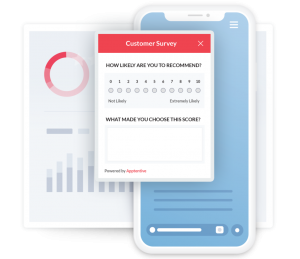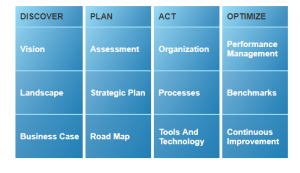— August 7, 2017

Maialisa / Pixabay
Whether you go to a store with a mission and a certain product in mind or you’re enjoying a relaxing day of shopping, browsing through the racks hoping to snag your next impulse buy, there’s nothing worse than an overbearing salesperson. Even if their intentions are good, there’s no quicker way to clear out a store and leave a bad taste in shoppers’ mouths than providing a bad customer experience. In fact, a Consumer Reports survey found that 64 percent of consumers admitted to actually leaving a store during the past year as a result of poor customer service.
When you think about it, the in-store experience isn’t so different than your email marketing strategy. At the end of the day, the goal is to delight customers, drive sales and make them want to come back again. This is impossible to achieve if you’re offending – knowingly or unknowingly – your entire email list with irrelevant content or a cadence that isn’t right. By looking at several types of annoying salespeople and their email marketing equivalent, we can start to avoid these bad habits and make the transition to the polite, helpful and knowledgeable personal shopper of our email marketing strategy.
The Rude One
This is the salesperson that has somewhere better to be, counting down the minutes until they can clock out and get on with their lives, and it’s no surprise that they can be some of the worst offenders. The same Consumer Reports study mentioned above found that 65 percent of those surveyed acknowledge being “tremendously annoyed” with a rude salesperson. This doesn’t have to be outwardly aggressive or impolite – it can be aloof and dismissive, too.
This is the equivalent of an email cadence gone wrong. Sometimes it’s the retailers that seem to email non-stop throughout the day and other times it’s the ones that seem to lose contact completely. With industry reports and articles that claim Tuesdays are the best day of the week to send an email, or emails sent between noon and 1 p.m. get the best open-rates, or one email a day is optimal, it’s easy to get caught up in ‘best practices.’ In reality, the only thing that should be dictating your email frequency is your customers. This is why test sends are imperative to your strategy – to see what your customers are responding to and how they’re evolving over time – whether it’s the amount of emails, type of email offer or the creative within.
The Pushy One
This is the salesperson that just won’t quit – they fail to pick up on social cues that you’re uninterested or take you on a wild goose chase to look at products you would never consider purchasing. With this type, there’s usually a personal agenda – a commission or a promotion on the horizon – and completely removes the customer from the shopping experience.
This is equivalent to the retailers pushing a certain product. Plans were made around it, expectations were set and they will pull out all the stops to make sure it flies off the shelves. Although the intentions of boosting business are pure, retail marketers need to take a more customer-centric approach to succeed. Data is a huge part of this – leveraging the information you already have to hone the specific interests and purchasing behaviors of each individual customer, and then using that to serve them emails that interest them most. This way, marketers can tailor a variety of product offerings suited to different types of customers and further segment their email strategy, delivering as many different email themes as they desire, or that the data indicates is optimal.
The Clueless One
Try as they might, this is the salesperson that just doesn’t have a clue. They have a perception of what they think you want or default to current trends and toss out suggestions until something sticks. However, by that time, the customer is likely uninterested and ready to move onto the next store.
This is the equivalent of retail marketers that don’t personalize their emails. Unfortunately, today the “You may also like” recommendations are the de rigueur of personalization. People are being fed more and more content that is similar to what they’ve already consumed. However, a perhaps unintended consequence of this is that this simply reinforces a person’s beliefs and preferences rather than informing them and helping them discover new things, ultimately underexposing your product catalog. Email marketers need to make sure they’re one step ahead, predicting what customers will want in the future – not what they’ve already bought. Not only is this advantageous to customers, but it helps retail marketers move beyond harmful tactics, like heavy discounting and constant promotional offers, while keeping consumers interested.
Just as we’re marketers, we’re consumers, too. Don’t give in to annoying tactics that wouldn’t fly with you in the store and spit them out to your email list. Take the time to know your customers, personalize content and establish a frequency that works for them. In other words – be the attentive, considerate personal shopper – not the annoying salesperson.
Digital & Social Articles on Business 2 Community
(85)






